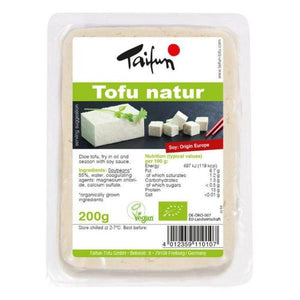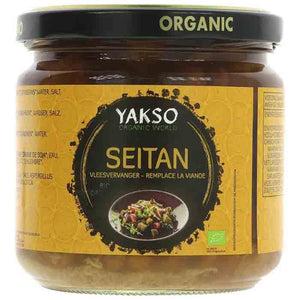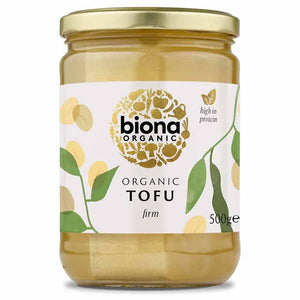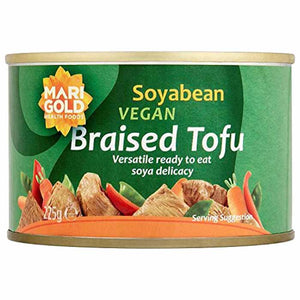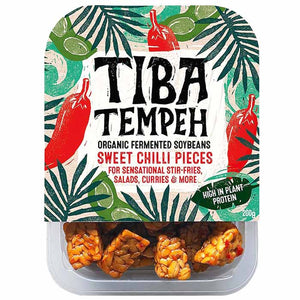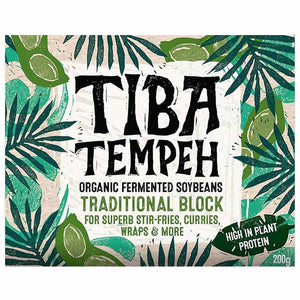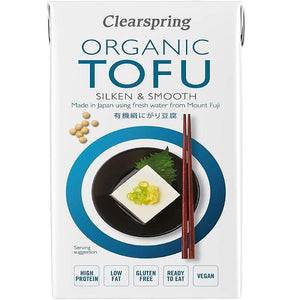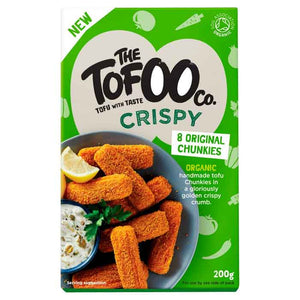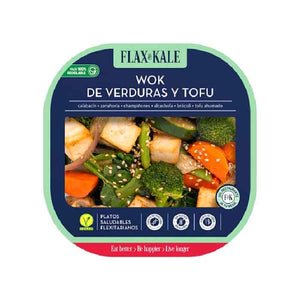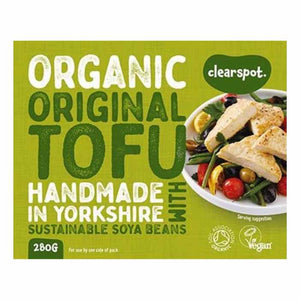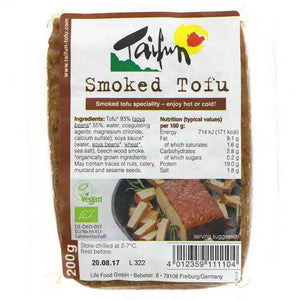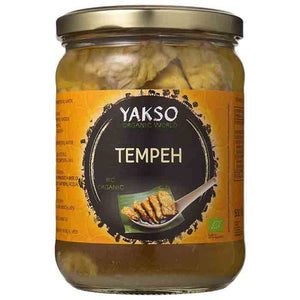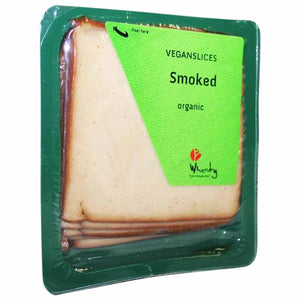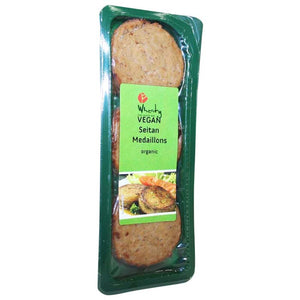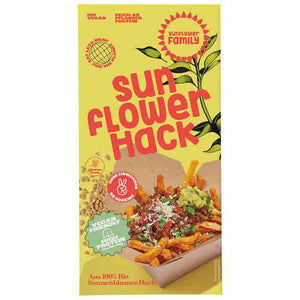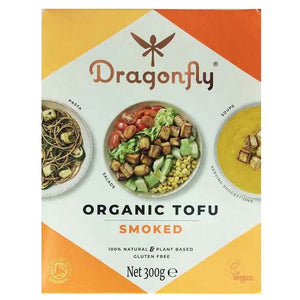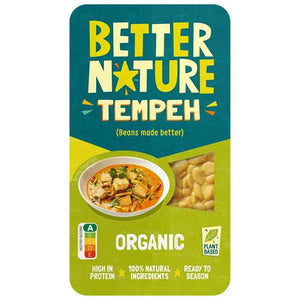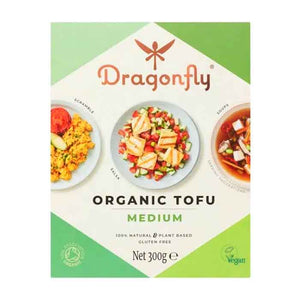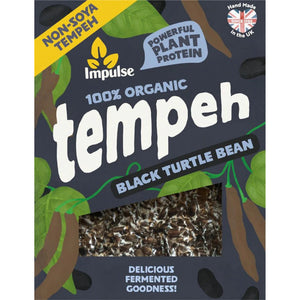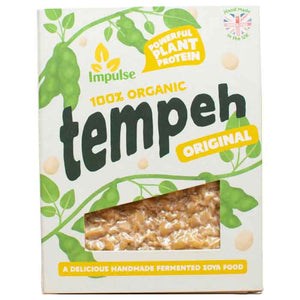Tofu, Tempeh & Soya
Buy tofu and buy tempeh with confidence at PlantX. We have organic tofu, soya meat alternatives, and all kinds of soya foods!
But first, let’s talk about the soybean! No matter how you say it or spell it, it’s all the same. The soybean is the granddaddy of all soy products, of course! tofu, tempeh, soy milk, bean paste, and even nattō wouldn’t exist without it.
Nowadays, soy serves another additional purpose! Soy is commonly a key ingredient in many vegan alternatives. cheese, meat alternatives, and other vegan substitutes can be made with soybeans! Read more
Sort By ×
- Featured
- Price, low to high
- Price, high to low
- Alphabetically, A-Z
- Alphabetically, Z-A
- Date, old to new
- Date, new to old
- Best Selling
But organic tofu, tempeh, and soya products are more than just small parts of a recipe. They can actually be the star of the show! Organic tofu can take centre stage in savoury masterpieces or star in simple, light meals. These three are so versatile, sky’s the limit when it comes to recipes! We just tofu and tempeh!
What’s the difference?
Since you’re trying to find out where to buy tempeh and tofu, you may as well learn the difference between the two. Let’s not forget that the two are soya by-products. It’s actually interesting to see how two foods made from soy can actually turn out so different!
Tofu
Tofu is accidentally vegan and is also known as bean curd. tofu is made by coagulating soy milk, a by-product of soybeans. You can usually get tofu in different textures, such as silken, soft, firm, extra firm, and even super firm! tofu originated in China and has made its way to Malaysia, Indonesia, Japan, Korea, Singapore, Thailand and Vietnam… and eventually the rest of the world.
tofu can be used to make sweet or savoury dishes. Its texture is usually spongy, which allows it to absorb the flavour of ingredients quite well. The different textures of tofu allow it to be cooked in many different ways.
Tempeh
Tempeh hails from Indonesia! It is not as widely known as tofu, but there are loads of people wanting to try and buy tempeh now. This traditional food is made by fermenting the soybeans themselves. What results is a firm texture - we would describe it as a soybean patty or cake.
Tempeh is usually fried or deep-fried. It has a nutty, mushroomy taste compared to tofu and can be eaten on its own or with accompanying ingredients. Tempeh’s firm texture also makes it grate-able. By running firm tempeh through a grater, one can make a ground mince alternative!
Tips for Cooking and Storing Tofu and Tempeh
tofu, if you didn’t know, has different textures. You can get soft, medium, firm, and extra firm organic tofu. Soft tofu is often used in soups like miso. Soft tofu can also be used to make desserts. If you’re cooking something saucy like a curry, best to get the medium tofu for its ability to absorb flavour. The firm tofu products are best for stir-frying or pan-frying as they hold shape quite well.
On the note of frying tofu, remember that tofu (no matter the texture) often comes with moisture. If you want to avoid any oil splatter, dry out your tofu with some kitchen towels first. While you won’t likely get all of its moisture out, doing this can minimise oil splatter quite effectively.
Tempeh is the opposite of tofu with regards to availability in texture. It generally only has one texture - and that’s firm. It tends to hold its shape in all kinds of cooking. Think of tempeh as your block of protein. You can cut it to however thick or thin you need it to be. You can even dice tempeh to create your own mince alternative!
There are also different ways to extend or preserve the shelf life of fresh tempeh. While refrigeration is cool, freezing actually helps with preserving the tempeh more. This is especially true if you keep the tempeh in an airtight container.
Frequently Asked Questions
What does organic tofu taste like?
Cheap tofu… fancy tofu… organic tofu - they all have a characteristically neutral taste. It doesn't mean it’s boring, just that you can easily adapt it to whatever you’re using it for! tofu absorbs flavour very well, so get creative with marinades, herbs and spices. That’s all thanks to its spongy texture. Imagine that soft, fluffy sponge soaking up all that flavour!
Which is better for cooking, tempeh or tofu?
That all depends on what you want to cook, really! Each one has its own unique taste and range of textures. We can’t choose just one! We’ve used tempeh to make burgers and we've used tofu to make soups and stir-fries. You really just have to think about the recipe you’re going to use it for tofu and tempeh are so versatile!
What does tempeh taste like?
Tempeh has more taste than organic tofu. The taste of tempeh is similar to the taste of earthy mushrooms. Because it is fermented, tempeh may have a light, pungent taste to it as well. But this will depend on the maker of the tempeh - so results may vary. Sometimes, the pungent taste may not appear at all!
What tofu recipes can you recommend?
At PlantX, we’ve made a vegan version of a popular dish. Check out this recipe for General Tso’s Tofu!
If you’re new to tofu, tempeh, or soya, we recommend trying out some recipes that would normally have meat and replacing it with any of the three. It’s also best to get pre-marinated or flavoured ones to start out with since it’s a great way to learn how your ingredient cooks.
What can I use my tempeh for?
Simply sliced thinly, tempeh can add protein to stir-fries and fried rice. Sliced or diced tempeh can also bulk up your wraps or burritos. You can also use thick slices of tempeh as your bread substitute when making burgers. Think rice burgers, but with tempeh! If you’re feeling a little creative and adventurous, why not try making a tempeh sushi roll?
